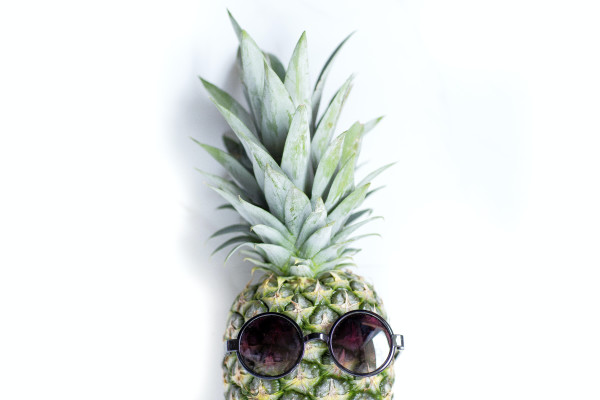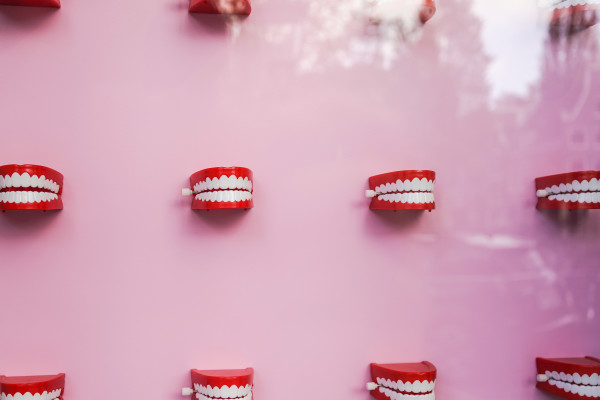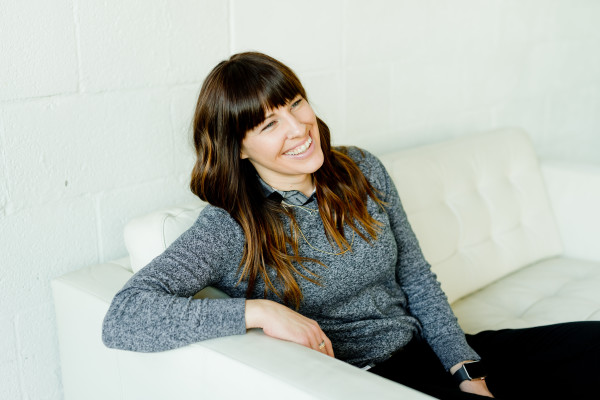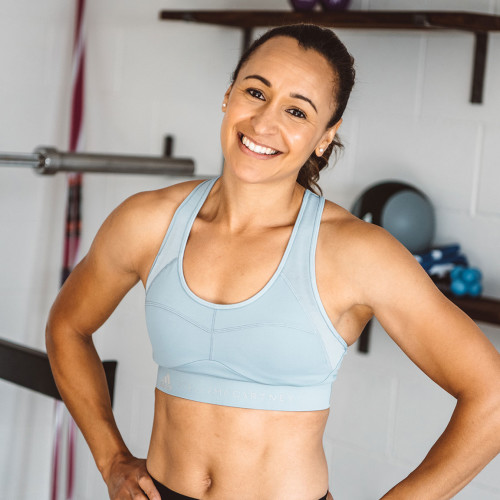Eat to beat period symptoms
2 years ago
Cycle syncing2 years ago
Cycle syncing
Are abdominal cramps, headaches or nausea the norm when you’re on your period? Then a few simple food swaps may be able to help, as Dr Emma Ross, Jennis Physiologist, reveals... Reviewed by: Dr Emma Ross
From caffeine slumps to sugar highs, it’s a no brainer that what we put in our mouths can have a huge impact on how we feel. But is there really a correlation between what we eat and the period symptoms we experience? We turn to Jennis Physiologist Dr Emma Ross for advice on what to eat to beat stomach cramps, bloating, headaches and more…
Around 80% of women experience period pain and abdominal cramps at some stage in their life, and for most of us, these cramps are caused by a group of fats in the uterus called prostaglandins (pronounced: pross-tah-gland-ins).
“Prostaglandins are essential for a healthy period and are responsible for telling your uterus to contract so that the lining can be expelled,” says Dr Emma. “However, if your contractions are too severe, you can experience a lot of discomfort, aches and cramps.”
“If too many prostaglandins are produced,” continues Dr Emma, “they can also leak into the bloodstream and gut, which can cause other period symptoms, such as nausea and diarrhoea.”
If you reduce the prostaglandins, it stands to reason that you can reduce the severity of cramping, and this is where the things you eat can help.
“Research has shown that magnesium and zinc can help alleviate the effects of prostaglandins, which in turn helps with aches and cramps. Because of this, it’s worth eating a diet that's rich in these minerals across your whole cycle, and being particularly diligent about it in the lead-up to and throughout your period.”
5 foods rich in magnesium include…
1) Dark chocolate (there’s 16% of your RDA in a 28-gram serving).
2) Legumes, such as lentils, beans and chickpeas (a 1-cup serving of cooked black beans contains 30% of your RDA ).
3) Cashews (there’s 20% of your RDA in a 28-gram serving).
4) Leafy greens, such as kale and spinach (there’s an amazing 39% of your RDA in just 1-cup of cooked spinach).
5) Seeds, such as flax, pumpkin and chia (there’s a whopping 37% of your RDA in a 28g serving of pumpkin seeds).
5 foods rich in zinc include…
1) Our good friend legumes, which provide zinc, as well as magnesium (there’s 9% of your zinc RDA in 100 grams of cooked lentils).
2) Seeds – again featured on the magnesium hit list. There’s 27% of the RDA for women in 30 grams of hemp seeds.
3) Meat and shellfish (there’s 30% of your RDA in an 100-gram serving of raw ground beef and an incredible 212% of RDA in 6 medium oysters).
4) Cashews, which again feature on both the zinc and magnesium hot list (there’s 11% of your RDA in a 28-gram serving).
5) Potatoes, which surprisingly provide 7% of your RDA per large potato..
Because magnesium works quite quickly, another option is to take a magnesium supplement just before and through your next period to see if that has an effect.
“Omega-3-packed foods, such as salmon, mackerel and sardines, are another great addition to your diet that’s proven to help you improve period pains,” says Emma. “The reasons for this are that the Omega-3 helps to beat inflammation and reduces the level of prostaglandins.
“There’s been a lot of research into this, with studies showing that Omega-3 supplements are more effective than ibuprofen in treating severe pain during menstruation. In another study , women saw a 30% reduction in pain symptoms after taking Omega-3 for just two months.”
There’s a lot of talk in the media about whether cutting out cow’s milk can help with period symptoms, but the reality (as with all things to do with the menstrual cycle) is that we’re all different, and it very much comes down to the individual.
“Although there is no robust research to support the fact that cutting out cow dairy can improve period symptoms, some women definitely benefit,” says Emma.
“The reason for this is down to a protein called A1 casein (pronounced: kei-seen). This causes an inflammatory response in the body, which can lead to symptoms such as hay fever, sinus infections, eczema and asthma,” explains Emma.
“In addition, this A1 casein intolerance may lead to menstrual cycle problems, such as period pain, acne, PMS and heavy periods.”
If you suspect you may have a problem with cow’s dairy, it’s worth testing the theory for yourself. To do this, Emma suggests doing a ‘period symptoms’ diary for one month, then cutting out cow’s dairy for 3 months to compare the difference and see if you are seeing positive results.
You can substitute cow’s dairy with non-dairy alternatives like almond milk, rice milk and coconut milk. You can also continue to have sheep and goat dairy, cream, ricotta and butter as they don’t contain A1 casein.
“There is one thing to be careful of when restricting your dairy,” says Emma. “Be mindful that you replace the calcium and vitamin D you aren’t getting from cow’s milk with foods like leafy greens, salmon and almonds. You don’t want to fix your period pains and then replace them with calcium deficiency, which has been associated with PMS.
During your period, in addition to the prostaglandin-cramps effect, because of the loss of red blood cells, your iron levels can drop, which can leave you feeling low energy.“
To counteract this effect, try including high-iron foods in your meals such as spinach, kidney beans, quinoa, red meat, white button mushrooms and pumpkin seeds,” says Emma.
To add to the impact, pair these foods with broccoli, cabbage and citrus fruit, which are packed with vitamin C, which helps you absorb iron more efficiently.
Another wonder supplement for both heavy periods and period pain is turmeric, the delicious yellow spice we use in our beloved curries. “Turmeric features an active ingredient called curcumin, which has been celebrated for its anti-inflammatory effects and proven to reduce the severity of PMS more specifically,” says Emma.
If you aren’t getting much turmeric in your diet (curry and a turmeric latte anyone?), you can take turmeric as a daily supplement, which you can increase the dose of during your period to relieve period pain. (Top tip: make sure you take after a meal for better absorption).
We all know how important it is to drink water, with the recommendation being that women should drink at least 1.2-1.5 litres a day. But, when you’re losing menstrual blood, this can contribute dehydration, so it’s even more important to pay attention to your hydration.
“To make sure you’re hitting the right hydration mark,” says Emma, “try and sip water regularly throughout the day, checking that when you pee, your urine is a pale straw colour.
“If it’s much darker, start to increase your water intake, but do it gradually. If you simply down a pint of water, lots of it will end up being urinated out before it’s been absorbed!”
If you’re one of those people who often experience bloating and water retention during your period, there are a couple of strategies that can help. First, avoid salty and highly processed food, as the high sodium content can cause up to 1.5L of water to be retained in the body.
Next, even though it feels counterintuitive, try and drink water and stay well-hydrated. “Even though you feel like your body is holding on to too much water,” says Emma, “if you restrict the amount of water you give your body, it will try and outsmart you by holding onto what’s in there already. It’s this that causes fluid retention.”
“Finally, one of the most effective and simple ways to reduce bloating is to chew your food more. If you eat fast, you end up gulping down air at the same time, which can make hormonally induced bloat even worse.”
Read: How to plan your fitness to make the most of your Period Phase
 Cycle syncing
Cycle syncing Perimenopause
Perimenopause Perimenopause
Perimenopause Perimenopause
PerimenopauseSign up to learn everything you need to know about CycleMapping, plus how you can live better and feel better through optimising your fitness to you.
This website uses cookies to ensure you get the best experience on our website. Learn more

Sign up for the very latest news on women's fitness, health and hormones, plus be the first to receive exclusive offers and extras